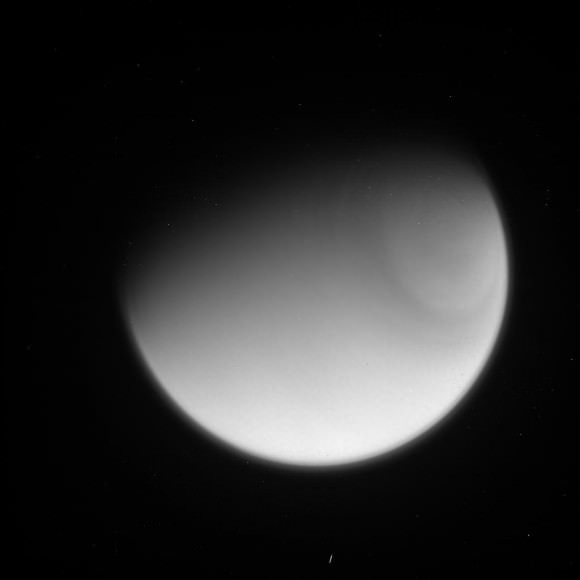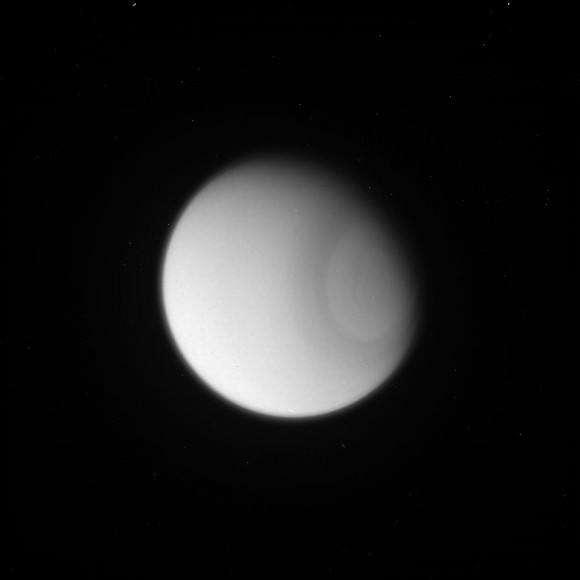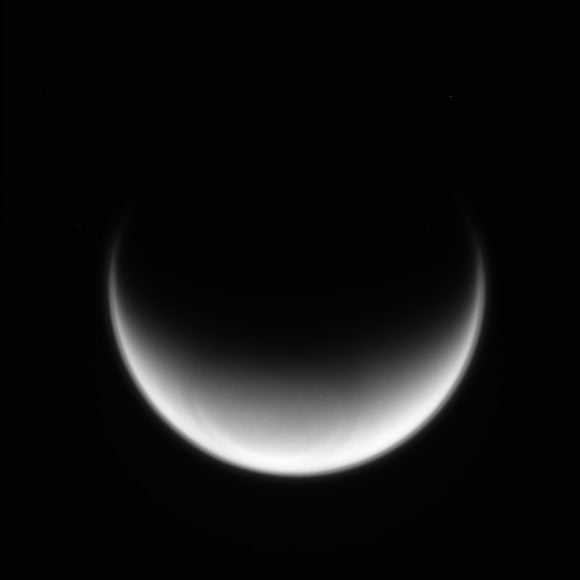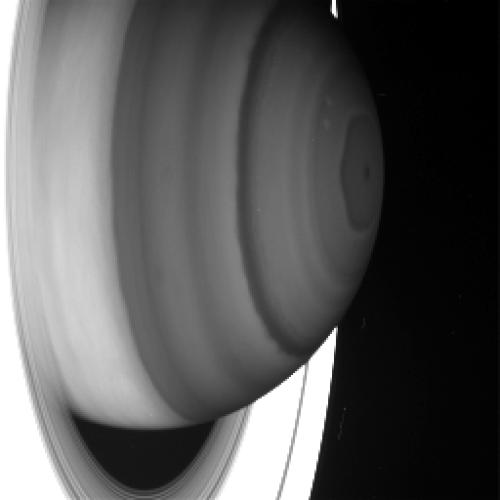Host: Fraser Cain (@fcain)
Guests:
Morgan Rehnberg (cosmicchatter.org / @cosmic_chatter)
Brian Koberlein (@briankoberlein)
Ramin Skibba (@raminskibba)
Continue reading “Weekly Space Hangout – Sept. 19, 2014: Private Spaceflight!”

Space and astronomy news
Host: Fraser Cain (@fcain)
Guests:
Morgan Rehnberg (cosmicchatter.org / @cosmic_chatter)
Brian Koberlein (@briankoberlein)
Ramin Skibba (@raminskibba)
Continue reading “Weekly Space Hangout – Sept. 19, 2014: Private Spaceflight!”
NASA’s anticipated $3 billion to $4 billion annual budget for the International Space Station is “overly optimistic”, a new report from NASA’s Inspector General says.
Transportation costs will likely rise when NASA uses commercial spacecraft to access the station instead of Russian Soyuzes, the report said. Also, if international partners don’t commit to extending the station four extra years to 2024, NASA will need to pick up more of the financial burden.
“While ISS program officials have been seeking ways to reduce costs and consolidate resources, it is unclear whether these efforts will be sufficient to address anticipated cost increases, particularly because the program does not expect to maintain any funding reserves over the next several years,” the report reads.
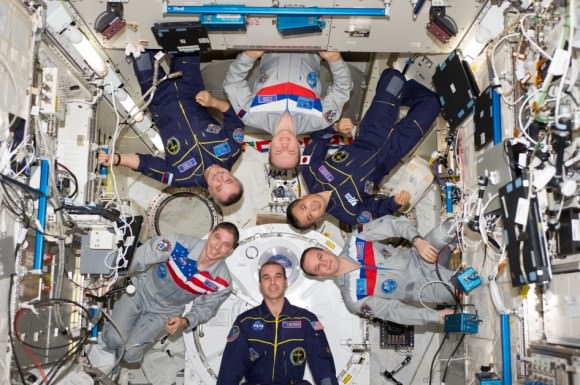
In January, the Obama administration approved NASA’s request to extend the ISS until 2024. At the time, NASA said the extension would be beneficial for science and also for the companies that will send spacecraft to the station, which right now appear to be SpaceX and Boeing. (NASA has been purchasing Soyuz seats since the shuttle retired in 2011, and U.S. flights are slated to start up again in 2017.)
There are 16 nations participating in space station operations, however, and any extension may require the approval of some or all of them. Political tensions with major partner Russia (which manages much of the station) have increased since the Ukrainian invasion crisis erupted earlier this year, prompting international condemnation. NASA cut most scientific ties with Russia in April, but preserved the station — an activity the agency says is proceeding normally, despite the crisis.
Besides political ramifications, the report points to technical issues with the ISS that could make an extension difficult. Its solar arrays are degrading faster than predicted, causing power limitations, and NASA has limited capability to lift large replacements parts to the station since the shuttle’s retirement.
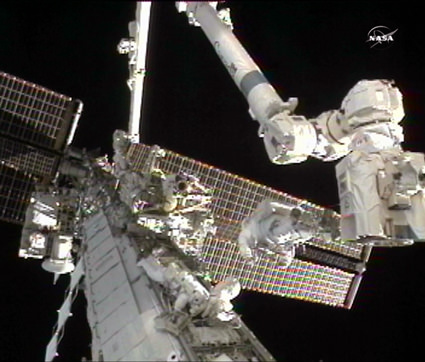
Even the station’s promise of science return is proving to be a challenge. ISS United States laboratory manager Center for the Advancement of Science in Space (CASIS) is facing “issues related to funding and patent licenses and data rights” that are “deterring commercial stakeholders from conducting research on the ISS,” the report notes.
The report suggests that NASA keep trying to secure commitments from the ISS partners to share station costs, and that the agency “prioritize the human health risks to long-term exploration” in terms of its scientific research. While the report praised NASA for taking its recommendations seriously, it chastised the agency for not having a list of risks to the ISS ready yet.
NASA’s spending on the ISS was $2.9 billion in fiscal 2013, with 43% of that money going to system operations and maintenance, and 34% to crew and cargo transportation. About 10% is allocated to research.
The report was signed by Paul Martin, the inspector general, and can be read in full at this link. This news report just skims the surface of what the actual report says, so we highly encourage you to read it.
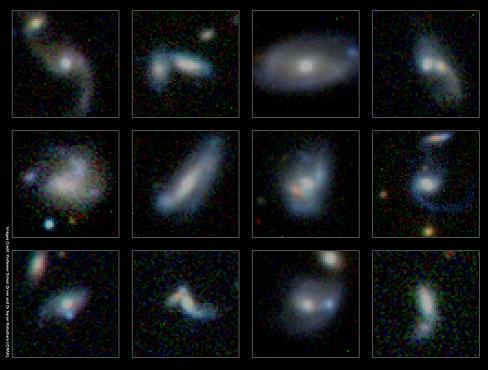
The Anglo-Australian Telescope in New South Wales has been watching how lazy giant galaxies gain size – and it isn’t because they create their own stars. In a research project known as the Galaxy And Mass Assembly (GAMA) survey, a group of Australian scientists led by Professor Simon Driver at the International Centre for Radio Astronomy Research (ICRAR) have found the Universe’s most massive galaxies prefer “eating” their neighbors.
According to findings published in the journal “Monthly Notices of the Royal Astronomical Society”, astronomers studied more than 22,000 individual galaxies to see how they grew. Apparently smaller galaxies are exceptional star producers, forming their stellar members from their own gases. However, larger galaxies are lazy. They aren’t very good at stellar creation. These massive monsters rarely produce new stars on their own. So how do they grow? They cannibalize their companions. Dr. Aaron Robotham, who is based at the University of Western Australia node of the International Centre for Radio Astronomy Research (ICRAR), explains that smaller ‘dwarf’ galaxies were being consumed by their heavyweight peers.
“All galaxies start off small and grow by collecting gas and quite efficiently turning it into stars,” he said. “Then every now and then they get completely cannibalized by some much larger galaxy.”
So how does our home galaxy stack up to these findings? Dr. Robotham, who led the research, said the Milky Way is at a tipping point and is expected to now grow mainly by eating smaller galaxies, rather than by collecting gas.
“The Milky Way hasn’t merged with another large galaxy for a long time but you can still see remnants of all the old galaxies we’ve cannibalized,” he said. “We’re also going to eat two nearby dwarf galaxies, the Large and Small Magellanic Clouds, in about four billion years.” Robotham also added the Milky Way wouldn’t escape unscathed. Eventually, in about five billion years, we’ll encounter the nearby Andromeda Galaxy and the tables will be turned. “Technically, Andromeda will eat us because it’s the more massive one,” he said.
What exactly is going on here? Is it a case of mutual attraction? According to Dr. Robotham when galaxies grow, they acquire a heavy-duty gravitational field allowing them to suck in neighboring galaxies with ease. But why do they stop producing their own stars? Is it because they have exhausted their fuel? Robotham said star formation slow downs in really massive galaxies might be “because of extreme feedback events in a very bright region at the center of a galaxy known as an active galactic nucleus.”
“The topic is much debated, but a popular mechanism is where the active galactic nucleus basically cooks the gas and prevents it from cooling down to form stars,” Dr. Robotham said.
Will the entire Universe one day become just a single, large galaxy? In reality, gravity may very well cause galaxies groups and clusters to congeal into a limited number of super-giant galaxies, but that will take many billions of years to occur.
“If you waited a really, really, really long time that would eventually happen, but by really long I mean many times the age of the Universe so far,” Dr. Robotham said.
While the GAMA survey findings didn’t take billions of years, it didn’t happen overnight either. It took seven years and more than 90 scientists to complete – and it wasn’t a single revelation. From this work there have been over 60 publications and there are still another 180 in progress!
Original Story Souce: Monster galaxies gain weight by eating smaller neighbours – ICAR
Further reading: ‘Galaxy and Mass Assembly (GAMA): Galaxy close-pairs, mergers and the future fate of stellar mass’ in the Monthly Notices of the Royal Astronomical Society. Published online 19/9/2014 at: http://mnras.oxfordjournals.org/lookup/doi/10.1093/mnras/stu1604 . Preprint version accessible at: http://arxiv.org/abs/1408.1476 .
NASA’s Mars Atmosphere and Volatile Evolution (MAVEN) orbiter is oh-so-close to its destination after a 10-month journey. It’s scheduled to arrive in orbit Sunday (Sept. 21) around 9:50 p.m. EDT (1:50 a.m. UTC) if all goes well, but there are a few things that need to happen, in order, first.
One big obstacle is already out of the way. MAVEN controllers had expected to do final engine burn tweaks to put it on the right trajectory, but the mission is so on-target that it won’t be needed.
“#MAVEN orbit insertion sequence has been activated on the s/c. No additional ground intervention is needed to enter #Mars’ orbit on Sunday,” the official account tweeted yesterday (Sept. 18).
So what does the sequence entail? MAVEN will need to turn on its six thruster engines for a 33-minute braking maneuver to slow it down. This will allow the gravity of Mars to “capture” the spacecraft into an elliptical or oval-shaped orbit.
Should that all go safely, MAVEN still has a lot of work to do before being ready to capture information about the upper atmosphere of the Red Planet. All spacecraft go through a commissioning phase to ensure their instruments are working correctly and that they are in the correct orbit and orientation to do observations.
As such, controllers will spend about six weeks moving MAVEN into a more circular orbit and testing out its instruments. Usually this period is done without interruption, but NASA wants to capture information when Comet Siding Spring comes whizzing by Mars Oct. 19.
Controllers are interested in learning about the comet and its effect on the upper atmosphere, so they will stop the commissioning to make those measurements. MAVEN will also be oriented in such a way that its solar panels are protected as much as possible from the dust, although scientists now believe the risk of strikes is very low.
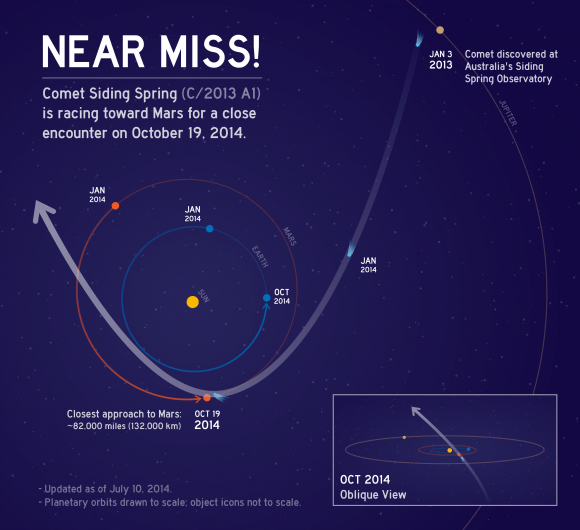
MAVEN is expected to work at Mars for a year, but investigators are hoping it will be for longer so that the atmosphere can be tracked through more of a solar cycle. The Sun’s activity is a major influencer on the atmosphere and the “stripping” of molecules from it over time, which could have thinned Mars’ atmosphere in the ancient past.
The spacecraft will also serve as a backup communications and data relay for the Opportunity and Curiosity rovers on the surface, which might be needed if some of the older NASA Mars spacecraft that fulfill that function experience technical difficulties.

On the darkest of nights, thousands of stars are sprinkled across the celestial sphere above us. Or, to be exact, there are 9,096 stars observable across the entire sky. Divide that number in half, and there are 4,548 stars (give or take a few) visible from horizon to horizon.
But this number excludes the glowing band stretching across the night sky, the Milky Way. It’s the disk of our own galaxy, a system stretching 100,000 light-years across. The naked eye is unable to distinguish individual specks of light, but the Isaac Newton Telescope (INT) on La Palma in the Canary Islands has recently charted 219 million separate stars in this disk alone.
For the last 10 years a team of astronomers led by Geert Barentsen from the University of Hertfordshire has been collecting and compiling light from all stars brighter than 20th magnitude, or one million times fainter than the human eye can see (at 6th magnitude).
They created a beautiful density map of the Milky Way, giving them new insight into the structure of this vast system. The black, fog-like regions are galactic dust, which blocks more distant light. The brighter regions are densely packed stars.
The INT took measurements in two broad filters, which captured light at the red end of the visible spectrum, and in one narrow filter, which captured light only from the hydrogen emission line, H-alpha. The inclusion of H-alpha enables exquisite mapping of nebulae, glowing clouds of hydrogen gas.
The production of the catalogue is an example of modern astronomy’s exploitation of “big data.” But it would also grace the walls of any art studio.
The winners of the 2014 “Astronomy Photographer of the Year” competition have been announced at the Royal Observatory in Greenwich England, and British photographer James Woodend’s gorgeous image of the aurora dancing across the Icelandic night sky was named the overall winner. This is the sixth year for the competition, which is run by the ROG and the Sky at Night Magazine.
“Every year the competition becomes more and more challenging to judge and we’re always astounded by the skill of the photographers,” said Dr. Maggie Aderin-Pocock, a presenter on The Sky at Night and one of the judges for the competition. “The Deep Space category, where the entrants have been able to capture such amazing details of objects light-years away and are almost on par with images taken by the Hubble Space Telescope, never fails to impress.”
See more gorgeous images and a list of the winners in the various categories below:
Earth and Space
James Woodend (UK) with Aurora over a Glacier Lagoon (Winner and Overall Winner)
Matt James (Australia) with Wind Farm Star Trails (Runner-up)
Patrick Cullis (USA) with Moon Balloon (Highly Commended)
Catalin Beldea (Romania) with Totality from Above the Clouds (Highly Commended)
O Chul Kwon (South Korea) with Venus-Lunar Occultation (Highly Commended)
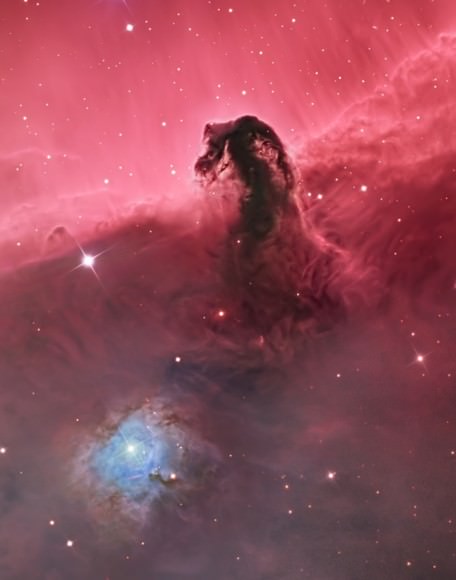
Deep Space
Bill Snyder (USA) with Horsehead Nebula (IC 434) (Winner)
David Fitz-Henry (Australia) with The Helix Nebula (NGC 7293) (Runner-Up)
J.P Metsävainio (Finland) with Veil Nebula Detail (IC 1340) (Highly Commended)
Rogelio Bernal Andreo (USA) with California vs Pleiades (Highly Commended)
Marco Lorenzi (China) with At the Feet of Orion (NGC 1999) – Full Field (Highly Commended)
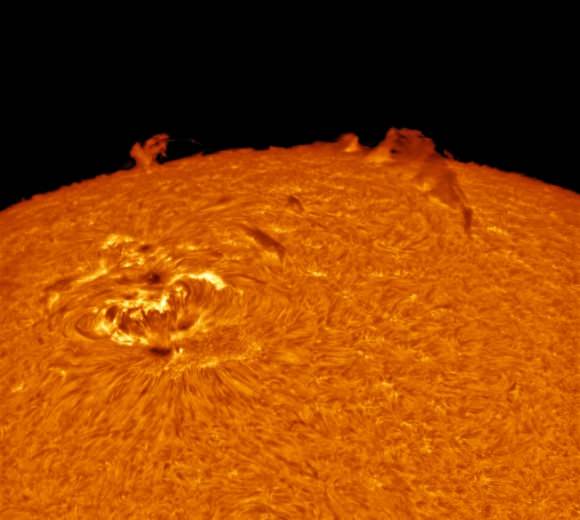
Our Solar System
Alexandra Hart (UK) with Ripples in a Pond (Winner)
George Tarsoudis (Greece) with Best of the Craters (Runner-Up)
Alexandra Hart (UK) with Solar Nexus (Highly Commended)
Stephen Ramsden (USA) with Calcium K Eruption (Highly Commended)
Tunç Tezel (Turkey) with Diamond and Rubies (Highly Commended)
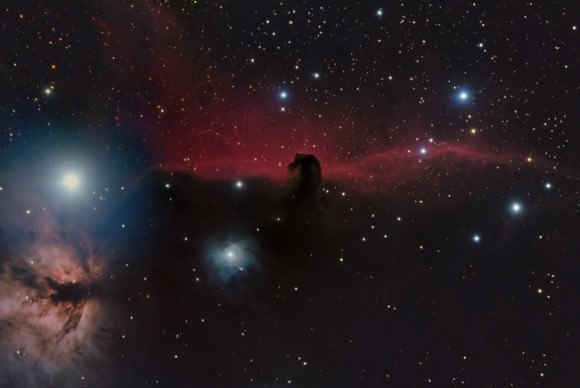
Young Astronomy Photographer of the Year
Shishir & Shashank Dholakia (USA, aged 15) with The Horsehead Nebula (IC 434) (Winner)
Emmett Sparling (Canada, aged 15) with New Year over Cypress Mountain (Runner-up)
Olivia Williamson (UK, aged 10) with The Martian Territory (Highly Commended)
Shishir & Shashank Dholakia (USA, aged 15) with The Heart Nebula (IC 1805) (Highly Commended)
Emily Jeremy (UK, aged 12) with Moon Behind the Trees (Highly Commended)
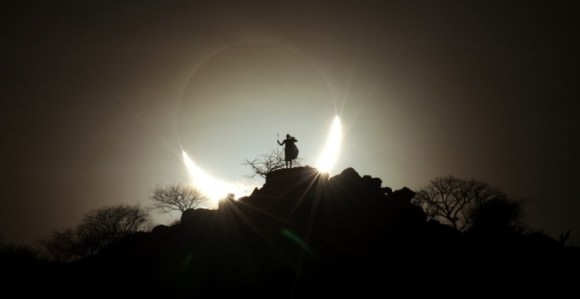
Special Prize: People and Space
Eugen Kamenew (Germany) with Hybrid Solar Eclipse 2 (Winner)
Julie Fletcher (Australia) with Lost Souls (Runner-up)
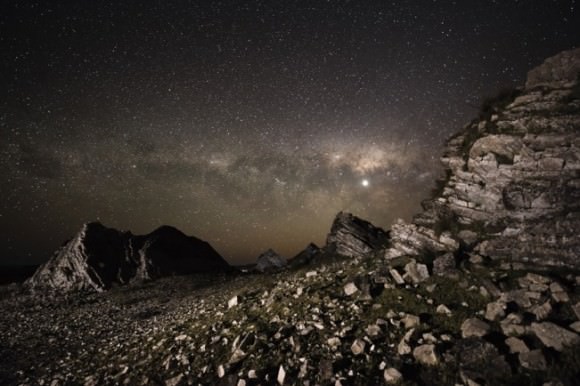
Special Prize: Sir Patrick Moore prize for Best Newcomer
Chris Murphy (New Zealand) with Coastal Stairways (Winner)
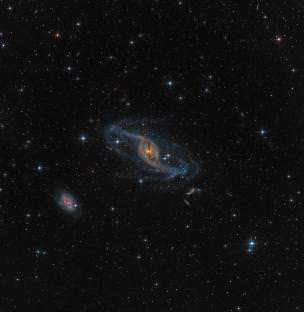
Robotic Scope Image of the Year
Mark Hanson (USA) with NGC 3718 (Winner)
For all the winners see the ROG website, and for other photos not shown here, you can see more at the Astronomy Photographer of the Year Flickr site . If you are in the UK, you can see an exhibition of the winning photos as the Astronomy Centre, Royal Observatory, Greenwich, from now until February 22, 2015.
Find more info at the ROG website, where you can also find info about the competition for next year — start planning ahead!
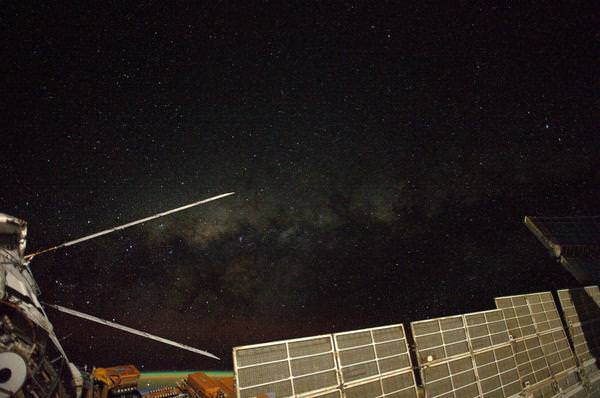
While NASA often speaks about the power of Earth observation from the International Space Station, the picture above from one of the astronauts on board now shows something else — you can get an awesome view of the Milky Way.
With the view unobscured by the atmosphere, the picture from Expedition 41 European astronaut Alexander Gerst shows that his perch on the ISS is pretty amazing. We wonder how it compares to some of the desert or mountaintop observatories here on Earth! And there are astronomical experiments on board, such as this one that may have found dark matter.
Below we’ve handpicked some of the best recent pictures from Gerst and NASA astronaut Reid Wiseman, a crewmate, as they take in the wonder of our planet and the universe.
I love watching #ocean currents. The Bay Bridge Tunnel in #Virginia has noticeable impact. pic.twitter.com/2c7DE3P68k
— Reid Wiseman (@astro_reid) September 17, 2014
This is where they produced the liquid oxygen for our #Soyuz rocket. @astro_reid #Exp41 pic.twitter.com/aC3a0wyxeA
— Alexander Gerst (@Astro_Alex) September 19, 2014
#Edouard – Perhaps the most perfectly shaped #hurricane ever created by nature. pic.twitter.com/PME51rDqkR
— Reid Wiseman (@astro_reid) September 17, 2014
I had no luck in spotting Kilimanjaro, but this view of East #Africa is pretty spectacular, too! #BlueDot pic.twitter.com/EbcBajShrH
— Alexander Gerst (@Astro_Alex) September 18, 2014
Almost all of #Japan at dawn. pic.twitter.com/zqrfEMcEyp
— Reid Wiseman (@astro_reid) September 14, 2014
Sometimes it seems like our planet is a living being itself. If it were, what would it tell us? #BlueDot #aurora pic.twitter.com/SZR1uIipDH
— Alexander Gerst (@Astro_Alex) September 14, 2014
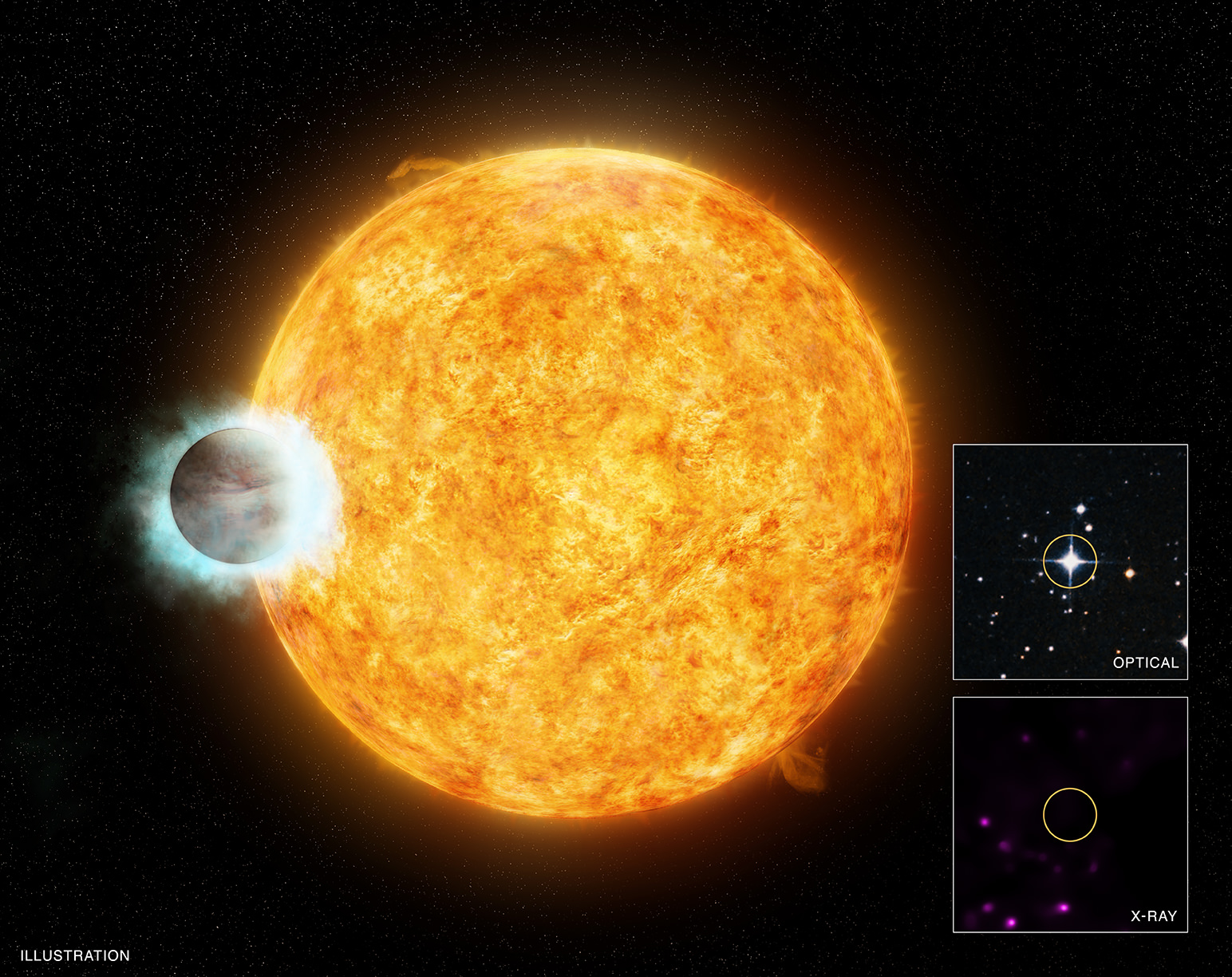
Hot young stars are wildly active, emitting huge eruptions of charged particles form their surfaces. But as they age they naturally become less active, their X-ray emission weakens and their rotation slows.
Astronomers have theorized that a hot Jupiter — a sizzling gas giant circling close to its host star — might be able to sustain a young star’s activity, ultimately prolonging its youth. Earlier this year, two astronomers from the Harvard-Smithsonian Center for Astrophysics tested this hypothesis and found it true.
But now, observations of a different system show the opposite effect: a planet that’s causing its star to age much more quickly.
The planet, WASP-18b has a mass roughly 10 times Jupiter’s and circles its host star in less than 23 hours. So it’s not exactly a classic hot Jupiter — a sizzling gas giant whipping around its host star — because it’s characteristics are a little more drastic.
“WASP-18b is an extreme exoplanet,” said lead author Ignazio Pillitteri of the National Institute for Astrophysics in Italy, in a news release. “It is one of the most massive hot Jupiters known and one of the closest to its host star, and these characteristics lead to unexpected behavior.”
The team thinks WASP-18 is 600 million years old, relatively young compared to our 5-billion-year-old Sun. But when Pillitteri and colleagues took a long look with NASA’s Chandra X-ray Observatory at the star, they didn’t see any X-rays — a telltale sign the star is youthful. In fact, the observations show the star is 100 times less active than it should be.
“We think the planet is aging the star by wreaking havoc on its innards,” said co-author Scott Wolk (who also worked on the previous study showing the opposite effect) from the Harvard-Smithsonian Center for Astrophysics.
The researchers argue that tidal forces created by the gravitational pull of the massive planet might have disrupted the star’s magnetic field generated by the motion of conductive plasma deep inside the star. It’s possible the exoplanet significantly interfered with the upper layers of the convective zone, reduced any mixing of stellar material, and effectively canceled out the magnetic activity.
The effect of tidal forces from the planet may also explain an unusually high amount of lithium seen in the star. Lithium is usually abundant in younger stars, but disappears over time as convection carries it further toward the star’s center, where it’s destroyed by nuclear reactions. So if there’s less convection — as seems to be the case for WASP 18 — then the lithium won’t circulate toward the center of the star and instead will survive.
The findings have been published in the July issue of Astronomy and Astrophysics and are available online.
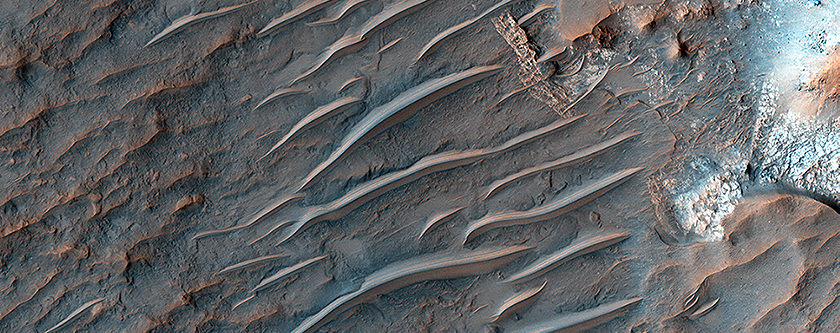
What are these thick dune-like features on Mars, and how were they formed? Scientists are still trying to puzzle out these ridges, which you can see above in a more tropical region of the Red Planet called Iapygia, which is south of Syrtis Major. The thick ridges were captured from orbit by the Mars Reconnaissance Orbiter’s High Resolution Imaging Science Experiment (HiRISE), and we’ve included some more intriguing pictures below the jump.
“Called transverse aeolian ridges, or TARs, the features stand up to 6 meters tall and are spaced a few tens of meters apart. They are typically oriented transverse to modern day wind directions, and often found in channels and crater interiors,” read an update on the University of Arizona’s HiRISE blog.
“The physical process that produces these features is still mysterious. Most TARs display no evidence of internal structure, so it is difficult to discern exactly how they were formed.”
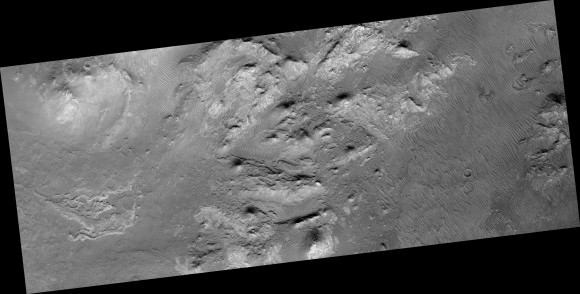
This picture from the NASA spacecraft was taken in Iapygia, which is south of Syrtis Major. While scientists say these look similar to TARs in other parts of the Red Planet, the features have layers on the northwest faces and a paucity on the southern side.
Scientists suggest it’s because these TARs may have had wedge-shaped layers, which hints that they would have gotten taller as material was added to the ridges. They hope to do further studies to learn more about how TARs formed in other regions on Mars.
We’ve included other recent releases from the HiRISE catalog below, so enjoy the Martian vistas!
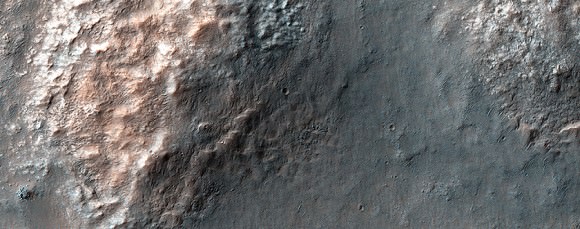
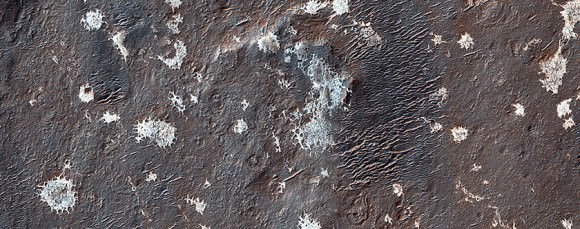
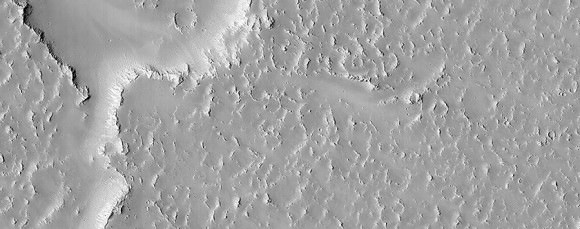
Is the surf up yet on Titan? As the moon of Saturn moves towards northern summer, scientists are trying to spot signs of the winds picking up. This weekend, the Cassini spacecraft plans a look at the the largest body of liquid on Titan, Kraken Mare, to see if there are any waves on this huge hydrocarbon sea.
Cassini will make the 105th flyby of Titan on Monday (Sept. 22) to probe the moon’s atmosphere, seas and even a crater. The spacecraft will examine “the seas and lakes of the northern polar area, including Kraken and Ligeia at resolution better than 3 miles (5 kilometers) per pixel,” the Cassini website stated.
Besides wet areas of Titan, Cassini will also look at dunes and the relatively fresh-looking Sinlap crater, where scientists hope to get a high-resolution image. Managers also plan a mosaic of Tsegihi — a bright zone south of the equator — and the darker dune-filled area of Fensal. The spacecraft additionally will examine aerosols and the transparency of hazes in Titan’s atmosphere.
Titan is of interest to scientists in part because its chemistry is a possible precursor to what made life possible. Earlier this week, Cassini transmitted several raw images of its view of Titan and Saturn right now — some of the latest pictures are below.
